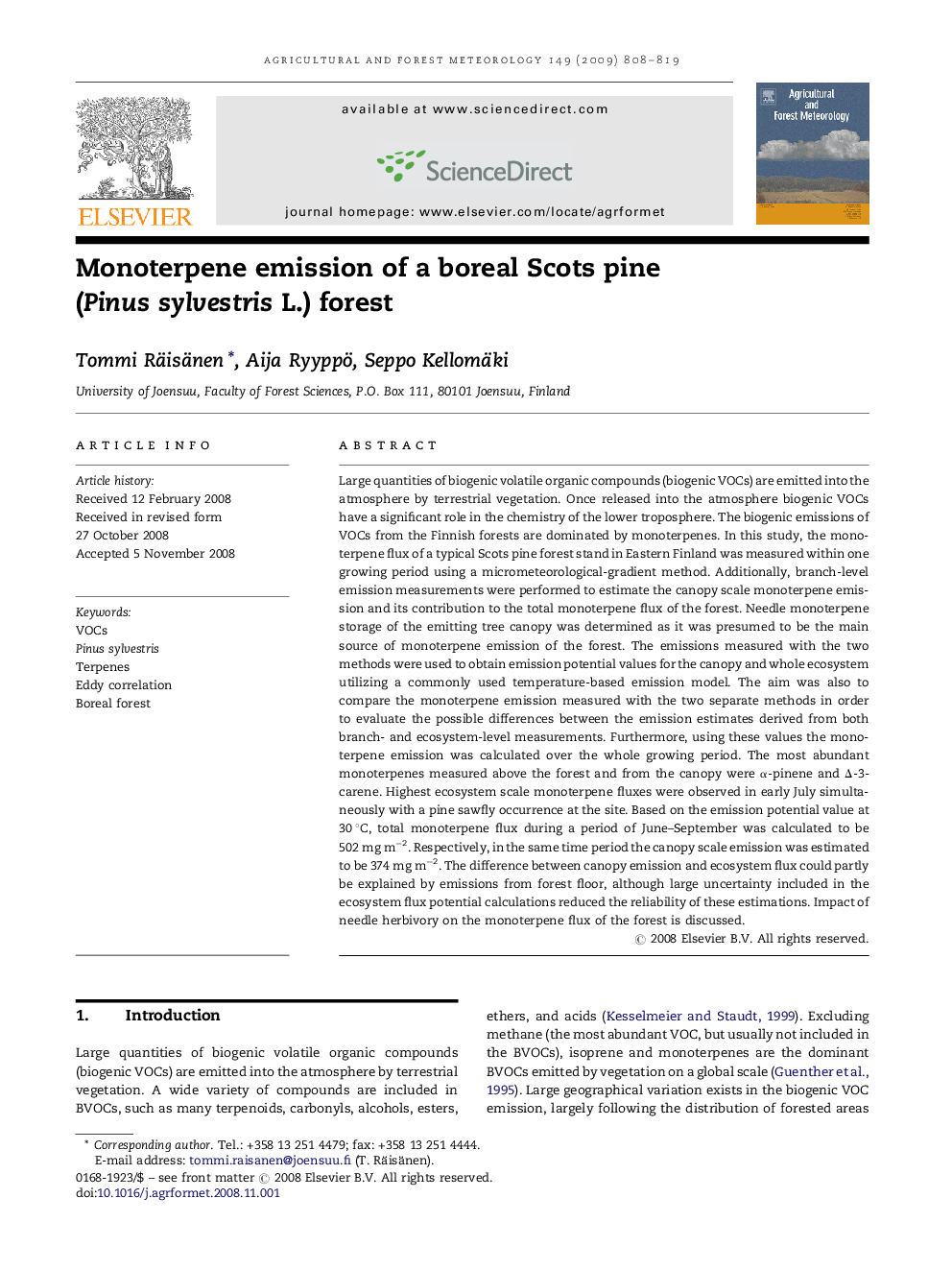| کد مقاله | کد نشریه | سال انتشار | مقاله انگلیسی | نسخه تمام متن |
|---|---|---|---|---|
| 82701 | 158410 | 2009 | 12 صفحه PDF | دانلود رایگان |

Large quantities of biogenic volatile organic compounds (biogenic VOCs) are emitted into the atmosphere by terrestrial vegetation. Once released into the atmosphere biogenic VOCs have a significant role in the chemistry of the lower troposphere. The biogenic emissions of VOCs from the Finnish forests are dominated by monoterpenes. In this study, the monoterpene flux of a typical Scots pine forest stand in Eastern Finland was measured within one growing period using a micrometeorological-gradient method. Additionally, branch-level emission measurements were performed to estimate the canopy scale monoterpene emission and its contribution to the total monoterpene flux of the forest. Needle monoterpene storage of the emitting tree canopy was determined as it was presumed to be the main source of monoterpene emission of the forest. The emissions measured with the two methods were used to obtain emission potential values for the canopy and whole ecosystem utilizing a commonly used temperature-based emission model. The aim was also to compare the monoterpene emission measured with the two separate methods in order to evaluate the possible differences between the emission estimates derived from both branch- and ecosystem-level measurements. Furthermore, using these values the monoterpene emission was calculated over the whole growing period. The most abundant monoterpenes measured above the forest and from the canopy were α-pinene and Δ-3-carene. Highest ecosystem scale monoterpene fluxes were observed in early July simultaneously with a pine sawfly occurrence at the site. Based on the emission potential value at 30 °C, total monoterpene flux during a period of June–September was calculated to be 502 mg m−2. Respectively, in the same time period the canopy scale emission was estimated to be 374 mg m−2. The difference between canopy emission and ecosystem flux could partly be explained by emissions from forest floor, although large uncertainty included in the ecosystem flux potential calculations reduced the reliability of these estimations. Impact of needle herbivory on the monoterpene flux of the forest is discussed.
Journal: Agricultural and Forest Meteorology - Volume 149, Issue 5, 7 May 2009, Pages 808–819